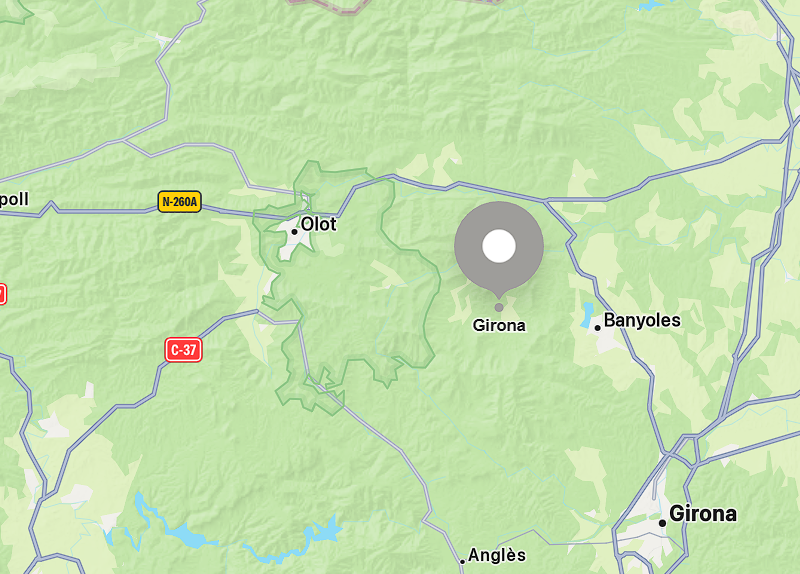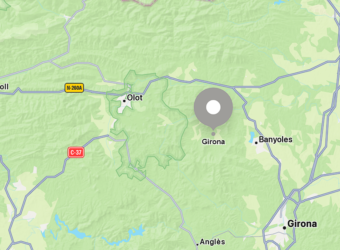Projects Category: External Link
- Home
- External Link

Shopify E.commerce Data Analysis
🔍 Overall Purpose
This analysis investigates the performance of an e-commerce business from multiple angles using historical order data to uncover insights and support data-driven decisions for improving profitability and efficiency.
📊 Key Analyses & Findings
- Historical Sales & Profit Trends (Analysis 1)
- Data from multiple years is used to track total sales and profit year-over-year.
- A projection model is likely applied to predict next year’s performance.
- Observation: Sales and profit fluctuate across years, possibly indicating changing customer behavior or market conditions.
- Reasons for Sales & Profit Decline (Analysis 2)
- A detailed category-level breakdown shows which sub-categories underperform.
- Example: Furniture shows high sales but low profit, suggesting high cost or discounts.
- Data analysis pinpoints unprofitable product segments to reassess.
- Shipment Impact (Analysis 3)
- Evaluates how shipment days vary by ship mode and category, affecting sales and customer satisfaction.
- Optimization strategy is hinted—likely reducing shipment days while maintaining cost-effectiveness.
- Segment-Category Profitability (Analysis 4)
- Measures average sales and profit per customer across Consumer, Corporate, and Home Office segments.
- Helps in targeted marketing and pricing strategies.
- Discounting Strategy (Analysis 5)
- Identifies categories (e.g. Furniture) with high discounts but lower profit contribution.
- Recommendation: Limit discounts for low-margin categories and invest in high-return ones like Technology.
- Regional Demand (Analysis 6)
- Aggregates order quantities by region and month, revealing demand hotspots.
- Strategy: Allocate inventory and marketing spend to high-performing regions.
- Year-over-Year Growth (Analysis 7)
- Tracks YOY growth in sales, profit, number of orders, and profit margin.
- Provides insights into business health and seasonal variations.
- Profit Improvement Recommendations (Analysis 8)
- Combines sales, profit, and margin analysis at category and sub-category level.
- Provides clear recommendations to prioritize profitable segments and reduce focus on loss-making areas.

Summary of the Royal Nights Hotel Business Plan
A business plan is a comprehensive document that outlines a company’s goals, strategy, and roadmap for success. It serves as a foundational blueprint for launching and managing a business. In the case of the Royal Nights Hotel business plan, the plan includes several key components that are typical in well-structured business plans:
- Executive Summary – Provides a snapshot of the business, including the vision, mission, objectives, and target customers. For Royal Nights, it highlights the aim to blend eco-luxury with personalized hospitality on the Montgat coast of Barcelona.
- General Description – Explains the location, concept, and layout of the hotel. It details the facilities, room types, architectural style, and environmental strategy.
- Company Analysis – Defines the hotel’s unique selling propositions, competitive advantages, and industry alignment, emphasizing sustainability and innovation.
- Customer and Market Analysis – Includes segmentation of target markets, customer behaviors, and insights from surveys. It also identifies gaps and opportunities in the local hospitality sector.
- Competitive Analysis – Compares the proposed hotel with existing competitors using SWOT analysis, benchmarking, and positioning strategies.
- Strategic and Marketing Plan – Outlines pricing, distribution channels, promotional tactics, and online engagement strategies tailored to attract the target market segments.
- Operations Plan – Describes the organizational structure, HR needs, staff roles, legal requirements, and hotel policies.
- Financial Plan – Projects key financials such as occupancy rates, revenue per room (RevPAR), gross operating profit, profit margins, and break-even analysis.
- Accessibility and Inclusivity Plan – Ensures services and facilities are inclusive for guests with disabilities.
- Milestones and KPIs – Lays out key goals and performance metrics to measure the hotel’s progress and success.
Overall, the business plan serves as both a strategic guide for launching the Royal Nights Hotel and a tool for securing investors and partnerships.
Company Formation
Through a wide variety of mobile applications, we’ve developed a unique visual system and strategy that can be applied across the spectrum of available applications.
New UAE Commercial Companies Law Comes into Effect on 2nd January 2022
As part of the substantial legal reforms which were recently announced in the UAE, and to mark the occasion of the UAE’s 50th anniversary, the UAE President—His Highness Sheikh Khalifa Bin Zayed Al Nahyan—issued Federal Law No. 32 of 2021 regarding the Commercial Companies on 20 September 2021 (“New Companies Law”), which recently came into force on 2 January 2022.
The New Companies Law replaces, in its entirety, Federal Law No. 2 of 2015 regarding Commercial Companies, as amended by Federal Decree Law No. 26 of 2020 (issued on 20 September 2020 pursuant to which fifty-one (51) articles of the Existing Companies Law were amended) (“Old Companies Law”).
The New Companies Law aims to enhance the UAE’s competitiveness in the field of economic development and proves once again that international best practices are applied.
New Corporate Entities Introduced by the New Companies Law
The New Companies Law introduced the following new corporate vehicles:
- A special purpose acquisition company (“SPAC”) which is established as a public joint stock company (PJSC). This entity is designed for the sole purpose of acquiring or merging companies. This follows the recent trend of utilizing SPACs for IPOs, as seen in other jurisdictions such as the United States. This creates an additional method to facilitate Mergers and Acquisitions. We expect the SCA to issue further resolutions to provide details on the practical implementation of SPACs and how they will be treated under the New Companies Law.
- A special purpose vehicle (“SPV”), as a company established for the purpose of separating the obligations and assets associated with a specific financing operation from the obligations and assets of its parent entity. Similarly, we expect the SCA to issue further resolutions and guidance but anticipate that such vehicles could be utilized in bond issuances, debt capital market transactions and credit transactions.
Key Changes Introduced by the New Companies Law
LIMITED LIABILITY COMPANIES
General Assembly Meetings
- A person who is not a manager may act as a proxy for a shareholder at a general assembly meeting.
- The notice period to convene a general assembly is now a minimum of twenty-one (21) days (previously, fifteen (15) days under the Old Companies Law).
- When a properly called meeting is inquorate and a second meeting is called, there will be no quorum requirement of the second meeting and the meeting shall be deemed validly constituted, notwithstanding the provisions of the respective company’s memorandum of association.
Memorandum of Association
The Memorandum of Association must explicitly set out alternative dispute resolution methods to resolve any company business related disputes which may arise between the company and any of its shareholders, directors or managers.
Manager Powers
Where a manager has not yet been replaced at the end of their term, such term may be extended by a maximum of six (6) months, pending the appointment of a new manager.
Statutory Reserves
The statutory reserves, made up from net profits, have now been reduced from ten percent (10%) to five percent (5%); the New Companies Law provides that shareholders can stop this allocation if the legal reserve of fifty percent (50%) of the share capital is met.
Expiration of the Board of Managers’ Term
If the term of the Board of Managers expires, and a new Board of Managers is not appointed, the existing board will continue to manage the LLC for a period of six (6) months, following which a new board must be appointed by the LLC. If the LLC fails to do so, the Department of Economic Development can step in and appoint a board for a maximum of one (1) year, during which the LLC must appoint a new Board of Managers. Therefore, the appointment of the Board of Managers by the DED is a substitute arrangement that will be regularized if the LLC fails to appoint the board itself.
Appointment of the Supervisory Board
Where an LLC consists of more than fifteen (15) shareholders (previously seven (7)), they must appoint a Supervisory Board consisting of a minimum of three (3) shareholders to supervise the company’s annual reports, budgets distribution of profits and to also supervise the LLC management and submit a report to the General Assembly in this respect.
PUBLIC JOINT STOCK COMPANIES
Replacement of a Director
If the director departs prior to the expiry of their term, the board is entitled to appoint a replacement director within thirty (30) days, who shall be presented to the General Assembly in its first meeting to approve the appointment or to appoint another individual. If approved, the new director will complete the remaining term of the previous director. In case the Board defaults in appointing a director during the period provided, the Board must then convene an election to appoint a new director in the General Assembly’s first meeting, and the newly elected director shall hold the position for the remaining term of the predecessor.
Directors’ Remuneration
This is limited to a maximum of ten percent (10%) of the net profits of the fiscal year (after depreciation and reserve deductions have taken place). In the event the company has not generated profits for that year, notwithstanding the company’s constitutional documents and approval of the General Assembly, a board member may be paid a lump sum fee not exceeding AED 200,000 at the end of the fiscal year.
Amendments to the Requirements for Contribution by the Founders
The New Companies Law has removed the minimum and maximum percentages of the capital to which the founders of a PJSC may subscribe to new shares upon public offering. Whereas, previously, the founders were required to subscribe to a minimum of 30% and a maximum of 70% prior to the invitation to the public subscription – instead, they may now subscribe to new shares up to the percentage specified in the prospectus and subject to the requirements of the SCA (whereas previously UAE Council of Ministers approval would be required for an exemption to the minimum 30% offering size).
Amendments to the Requirements for Conversion to a PJSC
The New Companies Law no longer requires a 10% net operational profits test within the two financial years preceding the application for conversion.
Sale of Part of the Shares of the PJSC upon its Conversion
The New Companies Law no longer sets a maximum limit on the percentage of shares that can be offered for sale upon conversion from a private joint stock company to a PJSC (the maximum limit on a sale of shares was set at 70% under the Old Companies Law). Now the percentage/ratio of sale shares and new shares being offered as part of an IPO on conversion is to be determined by the SCA.
Founders’ lock-up period in a PJSC
The New Companies Law has also removed the restrictions on founders of a PJSC from trading their shares once the converted company is listed.
Amendments to the Offering Subscription Period
There is no longer a statutory minimum period for the public to subscribe for shares in the IPO (10 days in the Old Companies Law), and refers to the period specified in the prospectus which may not exceed 30 business days. The subscription period for the offering may be extended for an additional period on application to the SCA, however, not exceeding the longstop date set out in the prospectus. This amends the strict position under the Old Companies Law, which limited any extension to 10 business days.
The founders of a PJSC may subscribe for any unsubscribed shares in the offering upon the expiry of the subscription period, but subject to the requirements of SCA. Previously, the founders were only allowed to subscribe for up to 70% of the shares and in the event that there remained any unsubscribed shares, then the incorporation of the PJSC would be revoked.
Further, the New Companies Law removes the restrictions on the founders of a PJSC from trading their shares once the converted company is listed.
Ability to Issue Discounted Shares
Subject to SCA approval and the passing of a special resolution, a PSJC is now permitted to issue shares at a discount in instances where the market price of the shares falls below the nominal value.
Nominal Value of Shares
A PJSC can now specify the value of its shares (thereby no longer restricted from being a minimum AED 1 and a maximum of AED 100). The nominal value of shares is now simply as set out in the Articles of Association.
Corporate Social Responsibility (CSR)
The New Companies Law allows newly established companies to provide CSR and to reserve any profits for such cause. This removes the limitation prescribed by the 2020 amendments that only allowed a PJSC to contribute to CSR if it had been established for at least two financial years with an upper limit contribution of two percent (2%) of the average profits for the last two financial years. Further, the New Companies Law mandates public disclosure on a company’s website even if it does not contribute to CSR, which was not required under the 2020 amendments.
DIVISION OF JOINT STOCK COMPANIES
The New Companies Law introduces the concept of dividing a joint stock company; such division can either be: (a) horizontal (i.e., where the same shareholders own directly the shares of the resulting company pro rata/similar to their shareholding in the parent company); or (b) vertical (i.e., where part of the assets or commercial activities of a company are carved out by setting up a subsidiary to acquire such carved assets or commercial activities, and such subsidiary is wholly owned by the company). With respect to the procedure for such division, the Board must prepare a “detailed division project” having necessary details as prescribed by the New Companies Law and present it to the General Assembly for its approval. Following such approval is obtained, a no objection from the SCA or the UAE Ministry of Economy (as applicable) must be obtained before the “detailed division project” can be implemented.
Effect of New Companies Law to the Recent Amendments (Effective from 1 June 2021)
Effect of the New Companies Law to Article 10 (Foreign Ownership) that Allows One Hundred Percent (100%) Foreign Ownership of UAE Onshore Companies.
Arguably, the 2020 amendments to the Old Companies Law, which attracted most interest from investors, was the modification of Article 10 of the Old Companies Law. This article required a UAE national, or an entity wholly owned by UAE nationals, to hold at least fifty-one percent (51%) of the share capital of each UAE company that is incorporated onshore in the UAE (this requirement did not apply to the economic free zones). Under the 2020 amendments, Article 10 had been amended to remove this requirement. Whilst the Old Companies Law will no longer be in effect from 2 January 2022, it is worth noting that Article 10 has remained unchanged under the New Companies Law. However, Article 10 states that the threshold required for UAE ownership (if any) should be determined by the Cabinet upon the recommendation of a committee, which is required to determine activities considered to have a ‘strategic impact’ in order for foreign investors to be entitled to hold up to one hundred percent (100%) of the legal interest in such companies.
A list of activities permitted for the purpose of one hundred percent (100%) foreign ownership has recently been published by each of the relevant Economic Departments in Abu Dhabi and Dubai. The UAE Cabinet is yet to issue a Resolution regarding the list of activities that would be considered to have a ‘strategic impact’.
The following key 2020 amendments have remained unchanged under the New Companies Law:
Exemptions to the New Companies Law
Exemptions remain in effect and may be lost only upon sale or public offer of any percentage of its share capital or listing of its shares on any stock exchange in the UAE.
Further, wholly owned government entities within the UAE are exempt from the New Companies Law if a special provision is contained in its constitutional documents.
Share Capital
The entire issued share capital of an LLC may be held by a single non-UAE shareholder (subject to the above with respect to the relevant activities being considered of ‘strategic impact’).
Minority Shareholders
A shareholder holding ten percent (10%) of the share capital of an LLC has the right to request a General Assembly to convene. Previously, the threshold was set at twenty-five percent (25%).
Foreign Company Branch
Branches of foreign companies are no longer required to appoint a national service agent.
Cabinet’s Decisions
The UAE Cabinet shall issue a decision confirming which provisions relating to joint stock companies will be applicable to LLCs taking into account the nature of an LLC.
Court Orders
A shareholder has a right to seek an urgent court order pursuant to which the other shareholders are required to fund an increase of capital to the extent necessary to prevent the liquidation of the company. If a shareholder fails to pay the capital amount required, its share in the company would be diluted accordingly.
Compliance With the New Companies Law
Existing companies must adjust their position within one (1) year of the New Companies Law coming into force (subject to any further extension). Any companies failing to do so will be considered dissolved.
Law on Bankruptcy
The law aims to increase business stability in the UAE and investors’ confidence in the UAE market.
Business bankruptcy in the UAE is governed by Federal Law by Decree No. 9 of 2016 on Bankruptcy which came into force on December 2016. The law provides a legal framework to help distressed companies in the UAE to avoid bankruptcy and liquidation through different mechanisms which include:
- Composition procedures
- Financial restructuring
- The potential to secure new loans under terms set by the law
- Conversion to declaration of bankruptcy and liquidation of the debtor’s assets.

Industrial Design Protection FAQs
Through a wide variety of mobile applications, we’ve developed a unique visual system and strategy that can be applied across the spectrum of available applications.

What is an industrial design?
An industrial design is the decorative or aesthetic component of a product in a legal sense. An industrial design may include three-dimensional elements, such as an article’s form, or two-dimensional elements, such as patterns, lines, or color.
What kind of protection does an industrial design right offer?
In general, the owner of a registered industrial design or a design patent has the right to prevent third parties from making, selling, or importing articles bearing or embodying a design that is a copy, or substantially a copy, of the protected design when such acts are carried out for commercial gain.
What kind of products can benefit from industrial design protection?
Industrial designs are used on a wide range of industrial and handcrafted things, ranging from packaging and containers to furniture and home goods, lighting equipment to jewelry, and electrical gadgets to textiles. Graphic symbols, graphical user interfaces (GUI), and logos may also be significant to industrial designs.
How are industrial designs protected?
In most countries, an industrial design must be registered in order to be protected as a “registered design” under industrial design legislation. Industrial designs are protected as “design patents” in several nations under patent law.
Industrial design laws in some countries grant – without registration – time- and scope limited protection to so-called “unregistered industrial designs”.
Depending on the national law and the kind of design, industrial designs may also be protected as works of art under copyright law.
How long does industrial design protection last?
Industrial design rights are granted for a set period. The term of industrial design protection varies by nation; however, it is usually at least ten years. Many nations split the overall term of protection into successive renewal periods.
How are industrial design rights enforced?
Industrial design rights are often enforced in court, usually on the initiative of the rights’ owner, as provided for by relevant legislation. The remedies and punishments differ by nation and might be civil (injunctions to stop an infringement, payment of damages, etc.), criminal, or administrative in nature.
What is the difference between an industrial design right and a patent?
A patent protects an innovation that gives a novel technological solution to a problem, but an industrial design right protects just the look or aesthetic characteristics of a product. In general, an industrial design right does not protect a product’s technical or functional aspects. Such traits, however, might be protected by a patent.
Applying for industrial design protection
What conditions must be met to obtain industrial design protection?
Independently generated industrial designs must meet any or all of the following requirements, depending on the applicable laws: novelty/originality.
The evaluation of uniqueness and originality differs per country. In general, an industrial design is regarded new or innovative if it has not previously been revealed to the public, and it may be called original if it differs considerably from known designs or combinations of recognized design aspects.
Who grants industrial design registrations or design patents?
The IP office of the nation (or area) where an application is lodged grants industrial design registrations or design patents. View a list of national and regional intellectual property offices.
Do I need an agent to file an application?
You may file an application for the registration of an industrial design or the issuance of a design patent yourself, depending on the applicable law, or you may be obliged to hire an agent.
How much does it cost to obtain industrial design protection?
Since the fees for filing for protection vary by country, it is recommended to contact your national (regional) IP office for further information on the pricing structure. If you seek protection overseas, you should consider the translation charges as well as the costs of engaging a local agency in addition to the regular filing fees.
Why do you need Business Consultant in U.A.E.
- Bact Is the top-class Dubai based business set up consultant and trademark agents in UAE with strong business network in all GCC Countries and Europe.
- BACT was established in 2012, with more than 10 years of experience , today we reached top leading position in UAE market as modern and quality branded business setup and trademark agent fully operating with international standards.
- BACT is registered as RAKICC agents, REG NO. L10312230 for international business company registration
To start your own business and register company in Dubai, visit https://bact.ae/free-consultation/
Our Contacts:
Phone+97144470880
Fax: +97144470881
Mob: +971557577199
Email: cs@bact.ae
Web: bact.ae






